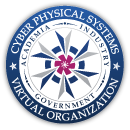Biblio
With the recognition of cyberspace as an operating domain, concerted effort is now being placed on addressing it in the whole-of-domain manner found in land, sea, undersea, air, and space domains. Among the first steps in this effort is applying the standard supporting concepts of security, defense, and deterrence to the cyber domain. This paper presents an architecture that helps realize forward defense in cyberspace, wherein adversarial actions are repulsed as close to the origin as possible. However, substantial work remains in making the architecture an operational reality including furthering fundamental research cyber science, conducting design trade-off analysis, and developing appropriate public policy frameworks.
Differential privacy is a concept to quantity the disclosure of private information that is controlled by the privacy parameter ε. However, an intuitive interpretation of ε is needed to explain the privacy loss to data engineers and data subjects. In this paper, we conduct a worst-case study of differential privacy risks. We generalize an existing model and reduce complexity to provide more understandable statements on the privacy loss. To this end, we analyze the impact of parameters and introduce the notion of a global privacy risk and global privacy leak.
Federated learning is a distributed learning technique where machine learning models are trained on client devices in which the local training data resides. The training is coordinated via a central server which is, typically, controlled by the intended owner of the resulting model. By avoiding the need to transport the training data to the central server, federated learning improves privacy and efficiency. But it raises the risk of model theft by clients because the resulting model is available on every client device. Even if the application software used for local training may attempt to prevent direct access to the model, a malicious client may bypass any such restrictions by reverse engineering the application software. Watermarking is a well-known deterrence method against model theft by providing the means for model owners to demonstrate ownership of their models. Several recent deep neural network (DNN) watermarking techniques use backdooring: training the models with additional mislabeled data. Backdooring requires full access to the training data and control of the training process. This is feasible when a single party trains the model in a centralized manner, but not in a federated learning setting where the training process and training data are distributed among several client devices. In this paper, we present WAFFLE, the first approach to watermark DNN models trained using federated learning. It introduces a retraining step at the server after each aggregation of local models into the global model. We show that WAFFLE efficiently embeds a resilient watermark into models incurring only negligible degradation in test accuracy (-0.17%), and does not require access to training data. We also introduce a novel technique to generate the backdoor used as a watermark. It outperforms prior techniques, imposing no communication, and low computational (+3.2%) overhead$^\textrm1$$^\textrm1$\$The research report version of this paper is also available in https://arxiv.org/abs/2008.07298, and the code for reproducing our work can be found at https://github.com/ssg-research/WAFFLE.



